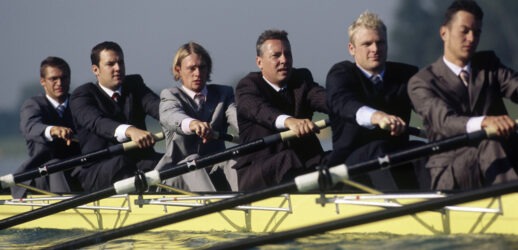It might not be what you think
Not going to lie, I might have a problem: I own a lot of tools. A lot of tools. I’m telling myself it’s because when I retire, I want to do more woodworking, but really it’s because I enjoy the simple pleasure of having the right tool when I need it. And so, I have two rules: I don’t buy a tool unless I have a project that requires it, and I always buy the right tool for the project.
When I have the right tool for the job, I find that the project goes smoother, takes less time, and comes out better than if I’d grabbed a tool that “kinda works for that.” Because, sure, you can use a regular claw hammer to tap in floorboards, but a dead blow hammer is less likely to mar the surface. You can use a circular saw to cut an 8′ sheet of plywood down, but a table saw makes it a snap.
So, when it comes to event technology, I try to apply the same rules. Don’t get it unless you need it, and when you need it, make sure it’s the right technology for the job. As a result, when I get asked for my “technology checklist” for events, it might look a little different than you expect.
Does it serve the goals and objectives of the event?
There’s a reason that in my classes I don’t even get to the technology until about 1/3 of the way into the course. We spend the first portion reinforcing good meeting and event design strategies and talking about how important it is to know your stakeholders and to truly understand what the goals and objectives are for everyone involved: attendees, internal executives, sponsors and exhibitors.
If you don’t know why you’re producing your event, and what each of your stakeholders is getting out of it, how can you possibly know whether or not technology is going to improve the experience?
Read More: Essential List: Top International Travel Apps of 2022
Shiny and new is irrelevant. It has to serve the purpose of the event, and sometimes the best technology to do that might be older, more reliable technology. Very few events are actually served well by new technology just for the sake of it being cutting-edge. Sure, there are a few, but not many. For everything else, almost every decision being made when it comes to AV and event technology can stem from this very first item on the checklist.
Does the technology benefit your stakeholders?
Adding “engagement technology” doesn’t magically create engagement if your attendees don’t actually want to engage, so it’s incredibly important to know who is benefiting from any technology you add to your event. To be clear, that doesn’t always have to be your attendees. It could be other stakeholders such as an internal sales team, exhibitors, sponsors or even (*gasp*) the planning team itself.
Knowing exactly who will benefit from the technology, and how, can go a long way toward convincing internal stakeholders to approve increased costs. It might even help you cover the cost without dipping into your own budget!
If a particular product or service will dramatically improve the attendee experience, it might justify an increase in ticket prices, or if the tech will make it easier for internal sales teams to isolate hot leads, you might be able to get them (or marketing) to kick in some of their budget to cover the cost.
The same goes with exhibitors and sponsors. Being able to show them exactly how their experience will be improved can often justify increased booth prices, or you can offer the technology as an add-on or special benefit for “Super Double-Diamond, Uber-Platinum” level sponsors.
Does the technology solve a specific problem?
Of course, the easiest way to show them how their experience will be improved is to solve a specific problem, sticking point, bottleneck or other issue that might be preventing them from having the best possible experience and achieving their goals. Adding technology without isolating what you want to improve not only runs the risk of not serving the goals of the stakeholders, but might even create a negative experience.
Read More: 10 Important Technology Questions to Ask in Your Next RFP
So many of the “nasty surprises” that seem to pop up when it comes to technology are actually related to mismatched expectations. Moving from one online platform to another requires stakeholders to learn a new interface, how to navigate, chat, etc.
If they’re not sure (or worse, have the wrong idea) about what benefits they’re receiving from that change, it can go from “cool and new” to “inconvenient and annoying” in a hurry. “Improved engagement” can mean different things to different stakeholders, so it’s important to be clear to everyone involved exactly what that means. What kind of engagement? How? With whom?
Can the ROI be measured?
One of the easiest ways to get technology approved by IT and internal stakeholders is to show exactly how you plan on determining whether or not it was worth the money. If you can’t measure it, how can you improve it? How much time will be saved for the planning team with the new back-end dashboard, and what does saving that time mean for the organization? What does “engagement” mean to you and your event?
If it’s stimulating conversations between attendees, find a way to measure how many chat messages are going back and forth, or how many “Let’s Connect” contact exchanges occur with your existing technology, how much you expect it to go up with your new technology, and then ruthlessly review the data afterwards to find out if it worked.
Event technology is a tool, as much as any hammer or cordless drill. And tools have specific purposes. Sometimes you can bend those purposes a bit and get by with what you have. Other times you run the risk of making your event worse by not using the right tool for the job.
There are plenty of woodworking tools I would love to own, but “I might use it someday” or “it’s on sale” aren’t good reasons. I get them as I need them, and always because it’s either going to save time or improve the final product. Good advice for my garage, and for your event!
This article appears in the October 2022 issue. You can subscribe to the magazine here.





